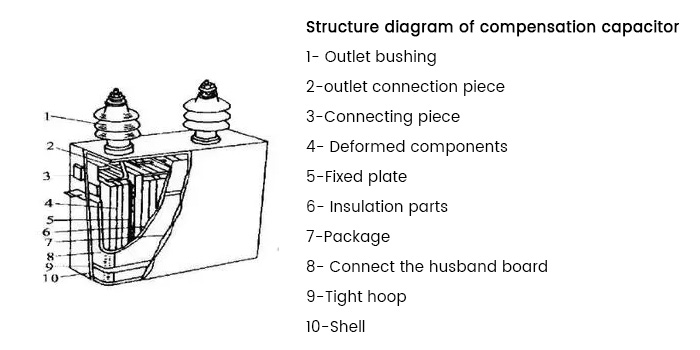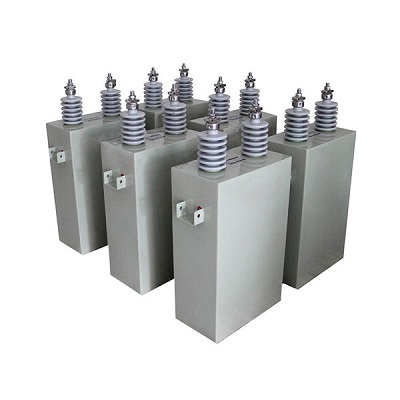When talking about pulse energy storage capacitors, we have to talk about power capacitors, which are mainly used in power systems and electrical equipment. This article tells you about the basic structure, working principle, and uses of power capacitors.
Power capacitors are widely used equipment in power systems. They are mainly used for carrier communication and measurement, control, protection, and improving the power factor of power systems, reducing line losses, improving voltage quality, and improving system power supply capabilities.
The basic structure of a power capacitor includes capacitive components, impregnating agents, fasteners, leads, casings, and sleeves. Taking the compensation capacitor as an example, the structure diagram is shown in the figure below


Under the action of an electric field, a capacitor stores charges on its plates, and an electric field is established in the medium between the plates. The capacitor stores a certain amount of charge and electric field energy.
The amount of charge on the capacitor plates is directly proportional to the voltage across the capacitor. That is, the higher the voltage applied between the two plates, the more charges are accumulated on the two plates. The amount of charge is represented by q,
That is, q=CUC or C=q/UC. In the formula, C - capacitance, q - charge, UC - capacitor terminal voltage.
Capacitance C is used to characterize the capacitor's ability to store charge. The unit is the farad, represented by the symbol F. In practical applications, because the far unit is too large, microfarad (uF) or picofarad (pF) is usually used as the unit.
The size of the capacitance C of the capacitor is determined by the geometric dimensions of the capacitor body (plate area and inter-electrode medium thickness) and the dielectric coefficient of the medium and has nothing to do with external conditions (the level of the external voltage). In actual work, to meet the requirements of operating voltage or reactive power capacity, single capacitors are often connected in series or parallel to form a capacitor bank for application.
When the capacitance required for work is greater than the capacitance of a single capacitor, multiple capacitors can be used in parallel. The equivalent total capacitance after the parallel connection is the sum of the capacitance values of each capacitor, that is
C =C+C2+C3+...
When the voltage of a single capacitor is less than the operating voltage, several capacitors are connected in series to meet the voltage requirements. The reciprocal of the equivalent total capacitance after the series connection is equal to the sum of the reciprocal capacitances of each series connection, that is
1/C=1/C+1/C+/C+....
1) Parallel capacitor: formerly known as phase-shifting capacitor. It is mainly used to compensate for the reactive power of inductive loads in power systems to increase power factor, improve voltage quality, and reduce line losses.
2) Series capacitors: connected in series in power frequency and high-voltage transmission and distribution lines to compensate for the distributed inductive reactance of the line, improve the static and dynamic stability of the system, improve the voltage quality of the line, lengthen the power transmission distance and increase the transmission capacity.
3) Coupling capacitor: Mainly used for high-frequency communication, measurement, control, and protection of high-voltage power lines and as components in devices that extract electrical energy.
4) Circuit breaker capacitor: formerly known as voltage equalizing capacitor. The parallel connection plays a voltage-equalizing role in the breaks of the ultra-high voltage circuit breaker, making the voltage between the breaks even during the breaking process and when it is disconnected. It can also improve the arc extinguishing characteristics of the circuit breaker and increase the breaking capacity.
5) Electrothermal capacitor: used in electric heating equipment systems with a frequency of 40 to 24,000 Hz to increase the power factor and improve the voltage or frequency characteristics of the circuit.
6) Pulse capacitor: It mainly plays the role of energy storage and is used as basic energy storage components such as impulse voltage generators, impulse current generators, and oscillating circuits for circuit breaker tests.
7) DC and filter capacitors: used in high-voltage DC devices and high-voltage rectifier and filter devices.
8) Standard capacitor: used in power frequency high voltage measurement dielectric loss circuit as a standard capacitor or as a capacitive voltage dividing device for measuring high voltage.